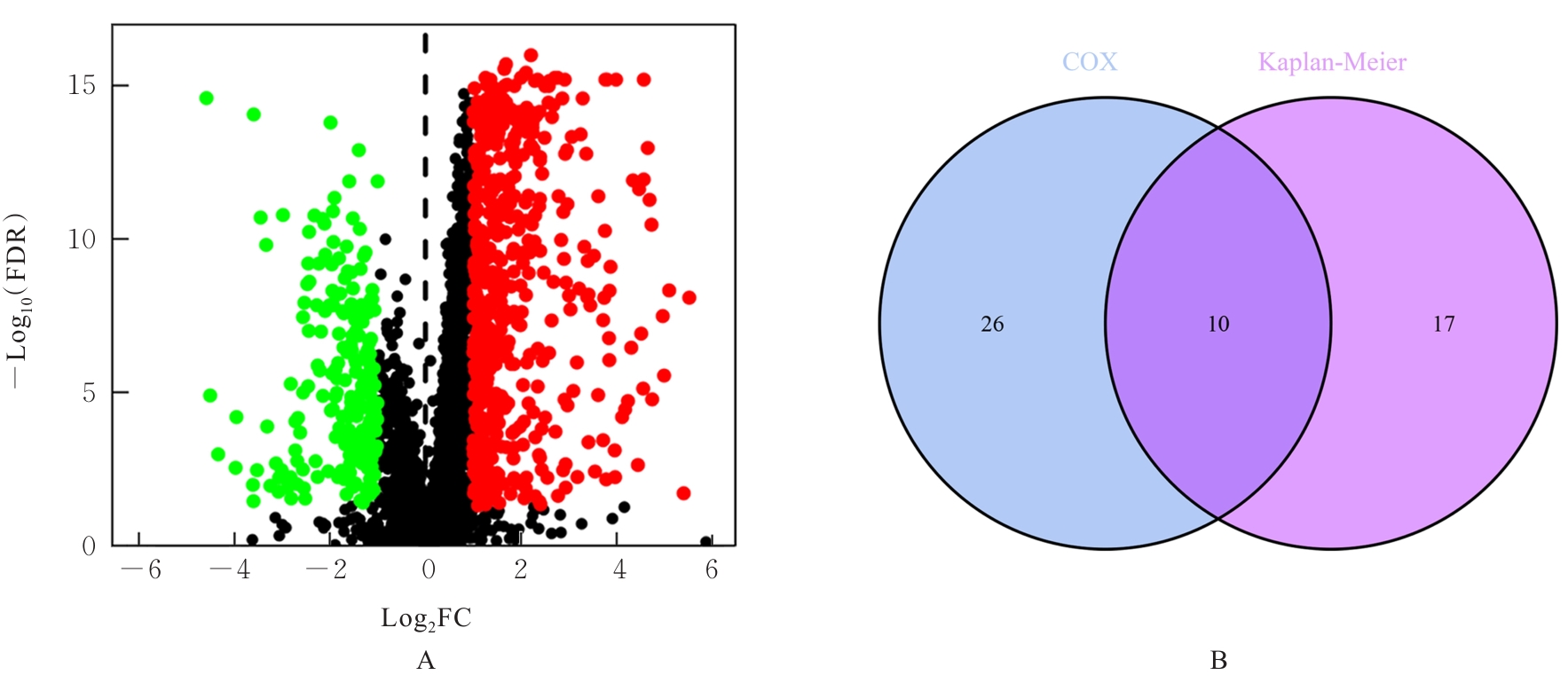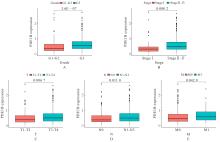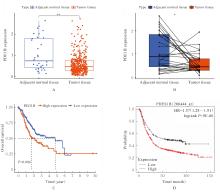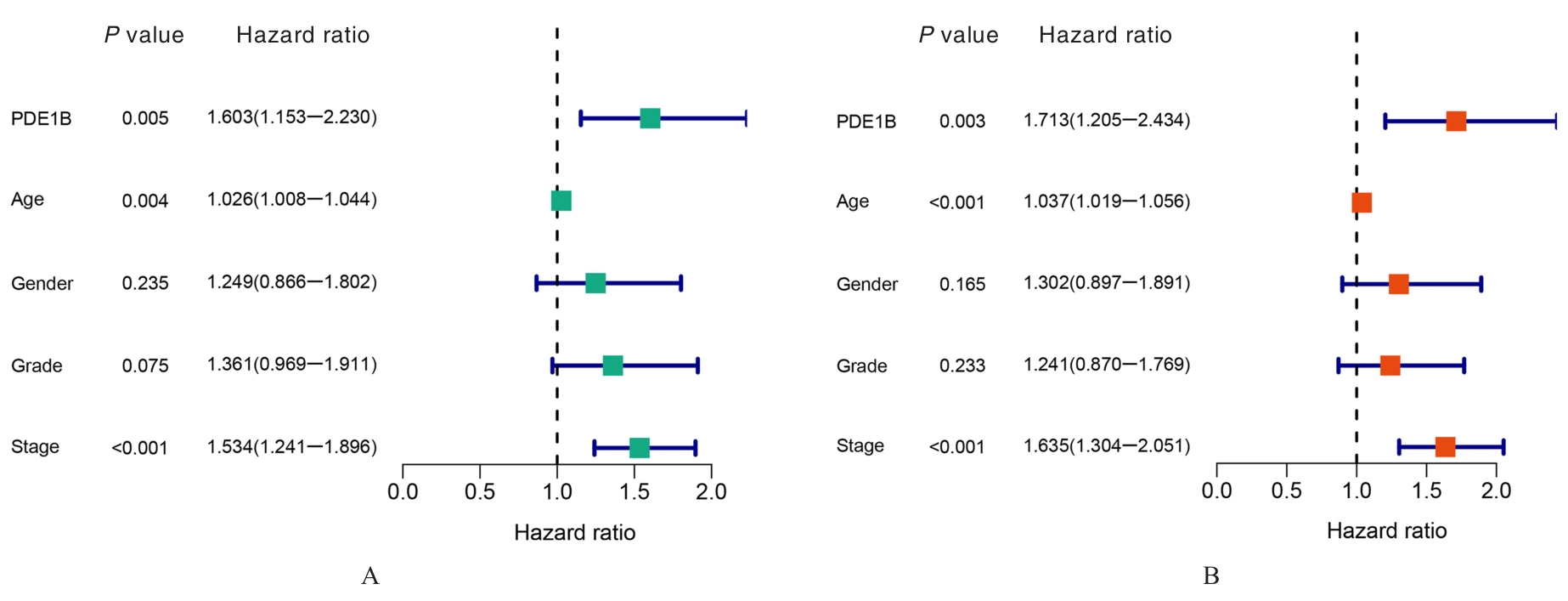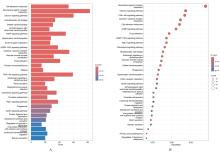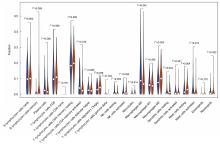| 1 |
SUNG H, FERLAY J, SIEGEL R L, et al. Global cancer statistics 2020: GLOBOCAN estimates of incidence and mortality worldwide for 36 cancers in 185 countries[J]. CA Cancer J Clin, 2021, 71(3): 209-249.
|
| 2 |
PARK E H, JUNG K W, PARK N J, et al. Cancer statistics in Korea: incidence, mortality, survival, and prevalence in 2021[J]. Cancer Res Treat, 2024, 56(2): 357-371.
|
| 3 |
ITO Y, MIYASHIRO I, ISHIKAWA T, et al. Determinant factors on differences in survival for gastric cancer between the United States and Japan using nationwide databases[J]. J Epidemiol, 2021, 31(4): 241-248.
|
| 4 |
GALLUZZI L, VITALE I, AARONSON S A, et al. Molecular mechanisms of cell death: recommendations of the Nomenclature Committee on Cell Death 2018[J]. Cell Death Differ, 2018, 25(3): 486-541.
|
| 5 |
SCHMAUCK-MEDINA T, MOLIÈRE A, LAUTRUP S, et al. New hallmarks of ageing: a 2022 Copenhagen ageing meeting summary[J]. Aging, 2022, 14(16): 6829-6839.
|
| 6 |
COLLADO M, BLASCO M A, SERRANO M. Cellular senescence in cancer and aging[J]. Cell, 2007, 130(2): 223-233.
|
| 7 |
ZHUO S H, CHEN Z M, YANG Y B, et al. Clinical and biological significances of a ferroptosis-related gene signature in glioma[J]. Front Oncol, 2020, 10: 590861.
|
| 8 |
AHLUWALIA P, AHLUWALIA M, MONDAL A K, et al. Immunogenomic gene signature of cell-death associated genes with prognostic implications in lung cancer[J]. Cancers, 2021, 13(1): 155.
|
| 9 |
OKI E, TOKUNAGA S, EMI Y, et al. Surgical treatment of liver metastasis of gastric cancer: a retrospective multicenter cohort study (KSCC1302)[J]. Gastric Cancer, 2016, 19(3): 968-976.
|
| 10 |
AL-BATRAN S E, HOZAEEL W, JÄGER E. Combination of trastuzumab and triple FLOT chemotherapy (5-fluorouracil/leucovorin, oxaliplatin, and docetaxel) in patients with HER2-positive metastatic gastric cancer: report of 3 cases[J]. Onkologie, 2012, 35(9): 505-508.
|
| 11 |
BANG Y J, VAN CUTSEM E, FEYEREISLOVA A, et al. Trastuzumab in combination with chemotherapy versus chemotherapy alone for treatment of HER2-positive advanced gastric or gastro-oesophageal junction cancer (ToGA): a phase 3, open-label, randomised controlled trial[J]. Lancet, 2010, 376(9742): 687-697.
|
| 12 |
MITSUI Y, SATO Y, MIYAMOTO H, et al. Trastuzumab in combination with docetaxel/cisplatin/S-1 (DCS) for patients with HER2-positive metastatic gastric cancer: feasibility and preliminary efficacy[J]. Cancer Chemother Pharmacol, 2015, 76(2): 375-382.
|
| 13 |
ZHAO C G, MO L P, LEI T, et al. MiR-5701 promoted apoptosis of clear cell renal cell carcinoma cells by targeting phosphodiesterase-1B[J]. Anticancer Drugs, 2021, 32(8): 855-863.
|
| 14 |
CHEUNG W Y. Cyclic 3',5'-nucleotide phosphodiesterase[J]. Biochem Biophys Res Commun, 1970, 38(3): 533-538.
|
| 15 |
BOLGER G B. The cAMP-signaling cancers: clinically-divergent disorders with a common central pathway[J]. Front Endocrinol, 2022, 13: 1024423.
|
| 16 |
ZHANG H Y, KONG Q B, WANG J, et al. Complex roles of cAMP-PKA-CREB signaling in cancer[J]. Exp Hematol Oncol, 2020, 9(1): 32.
|
| 17 |
KUMAZOE M, TAKAI M K, HIROI S, et al. The FOXO3/PGC-1β signaling axis is essential for cancer stem cell properties of pancreatic ductal adenocarcinoma[J]. J Biol Chem, 2017, 292(26): 10813-10823.
|
| 18 |
KUMAZOE M, SUGIHARA K, TSUKAMOTO S, et al. 67-kDa laminin receptor increases cGMP to induce cancer-selective apoptosis[J]. J Clin Invest, 2013, 123(2): 787-799.
|
| 19 |
YAMASHITA M, KUMAZOE M, ONDA H, et al. PPAR/PDK4 pathway is involved in the anticancer effects of cGMP in pancreatic cancer[J]. Biochem Biophys Res Commun, 2023, 672: 154-160.
|
| 20 |
SONNENBURG W K, SEGER D, BEAVO J A. Molecular cloning of a cDNA encoding the “61-kDa” calmodulin-stimulated cyclic nucleotide phosphodiesterase. Tissue-specific expression of structurally related isoforms[J]. J Biol Chem, 1993, 268(1): 645-652.
|
| 21 |
BENDER A T, OSTENSON C L, GIORDANO D, et al. Differentiation of human monocytes in vitro with granulocyte-macrophage colony-stimulating factor and macrophage colony-stimulating factor produces distinct changes in cGMP phosphodiesterase expression[J]. Cell Signal, 2004, 16(3): 365-374.
|
| 22 |
CHOW A, SCHAD S, GREEN M D, et al. Tim-4+ cavity-resident macrophages impair anti-tumor CD8+ Tcell immunity[J]. Cancer Cell, 2021, 39(7): 973-988.
|
| 23 |
KRYCZEK I, LANGE A, MOTTRAM P, et al. CXCL12 and vascular endothelial growth factor synergistically induce neoangiogenesis in human ovarian cancers[J]. Cancer Res, 2005, 65(2): 465-472.
|
| 24 |
GUO Q, GAO B L, ZHANG X J, et al. CXCL12-CXCR4 axis promotes proliferation, migration, invasion, and metastasis of ovarian cancer[J]. Oncol Res, 2014, 22(5/6): 247-258.
|
| 25 |
ZHANG F, CUI J Y, GAO H F, et al. Cancer-associated fibroblasts induce epithelial-mesenchymal transition and cisplatin resistance in ovarian cancer via CXCL12/CXCR4 axis[J]. Future Oncol, 2020, 16(32): 2619-2633.
|
| 26 |
LUKER K E, LUKER G D. The CXCL12/CXCR4/ACKR3 signaling axis regulates PKM2 and glycolysis[J]. Cells, 2022, 11(11): 1775.
|
| 27 |
ROCCONI R P, STANBERY L, TANG M, et al. ENTPD1/CD39 as a predictive marker of treatment response to gemogenovatucel-T as maintenance therapy in newly diagnosed ovarian cancer[J]. Commun Med, 2022, 2: 106.
|
| 28 |
THELEN M, LECHNER A, WENNHOLD K, et al. CD39 expression defines cell exhaustion in tumor-infiltrating CD8+ T cells-letter[J]. Cancer Res, 2018, 78(17): 5173-5174.
|
| 29 |
GU J, NI X H, PAN X X, et al. Human CD39hi regulatory T cells present stronger stability and function under inflammatory conditions[J]. Cell Mol Immunol, 2017, 14(6): 521-528.
|
 )
)

